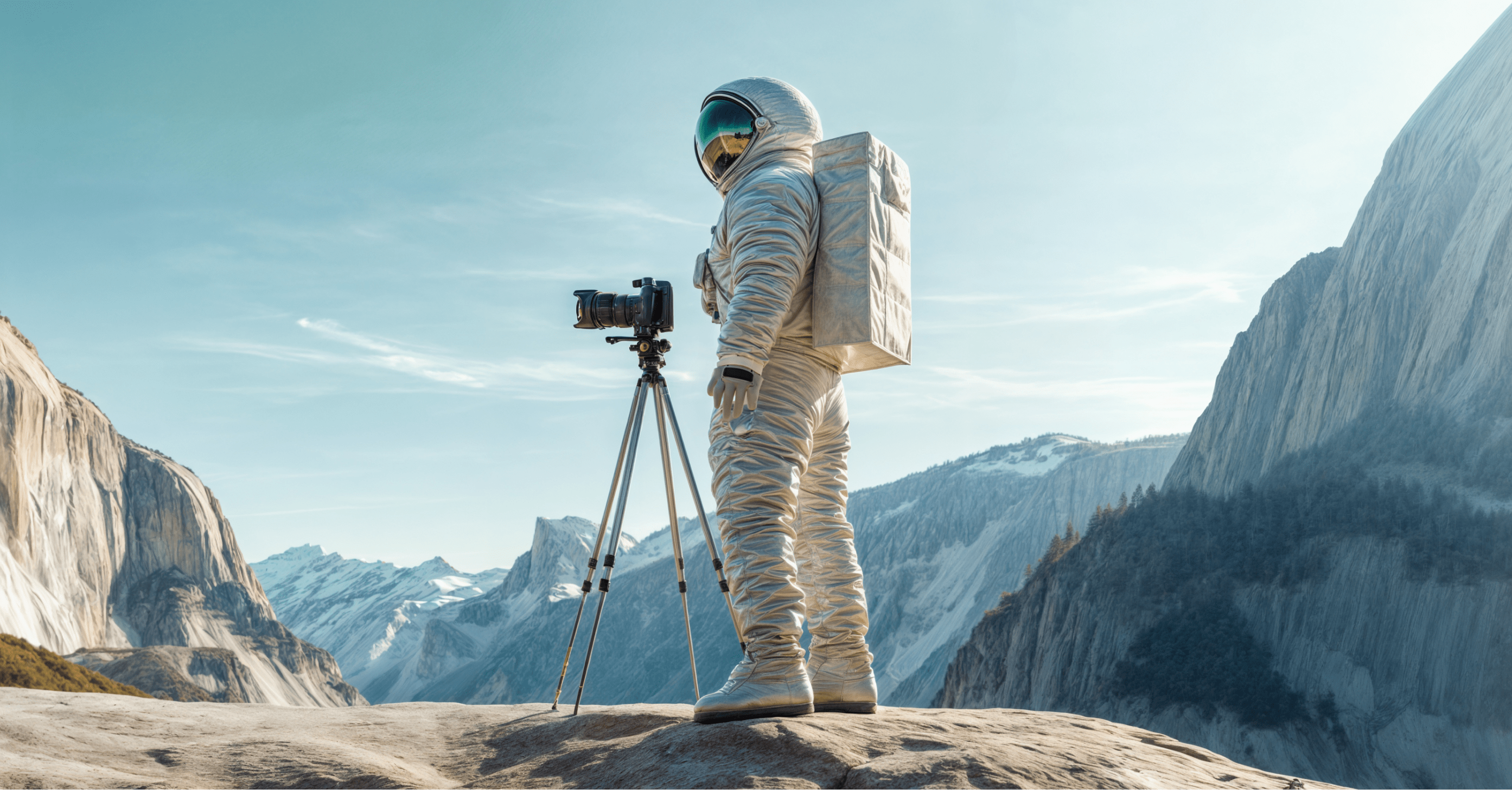All You Need To Know About Buying & Selling NFTs
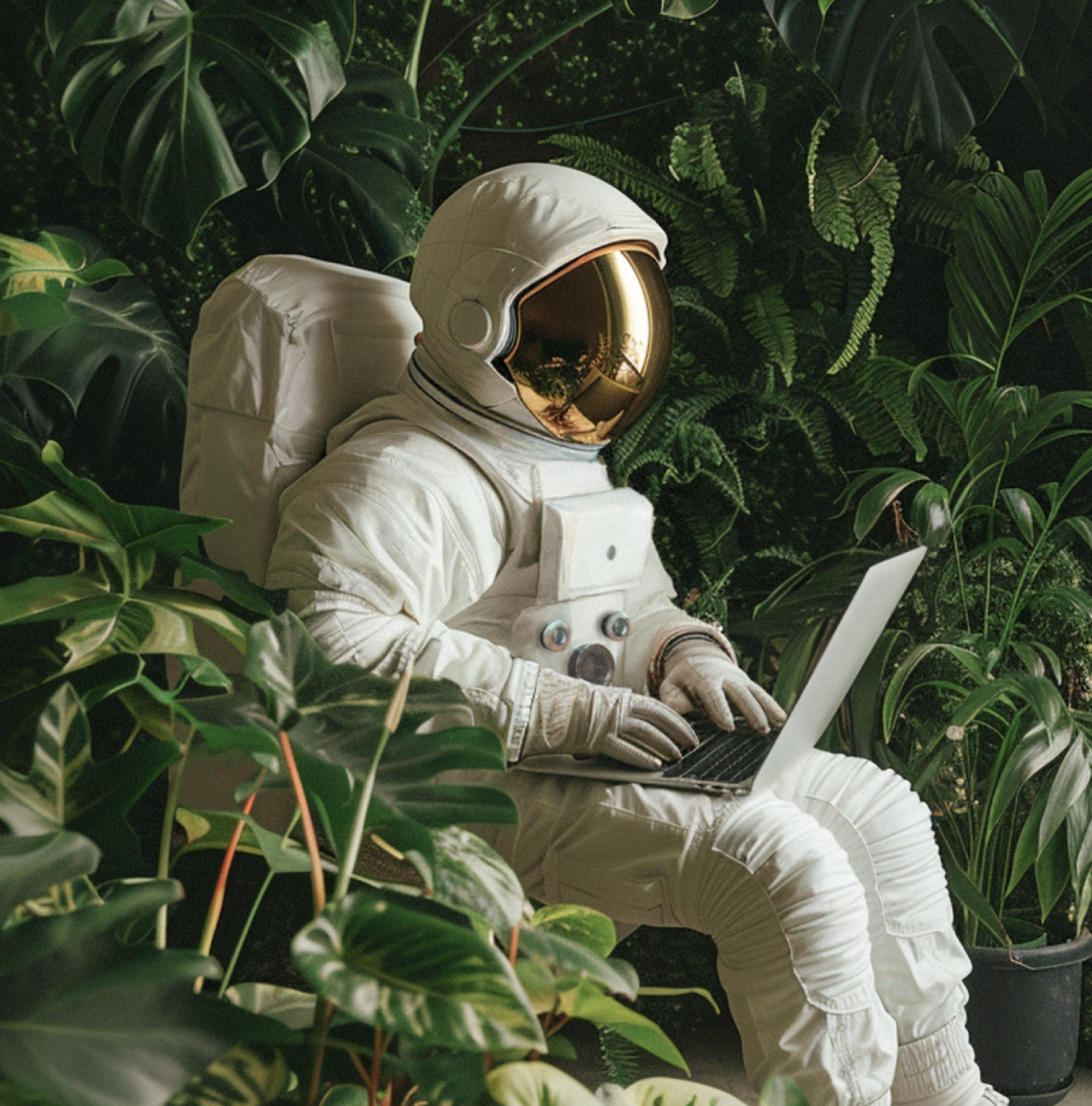

In normal times, news of a high-priced art sale would not be a trending story on social media. But these aren't normal times, and the piece of art in question isn't your average oil on canvas.
Recently, the famed art auction house Christie's announced they sold the NFT of a digital piece by Beeple for US $69 million. There's a lot in that last sentence to unpack if you are uninitiated into the world of digital art and NFTs. We've done the legwork for you so you can be an NFT expert on your next virtual happy hour.
In this NFT Guide you will learn;
- What does NFT stand for and what is it?
- Benefits of NFT for Artists
- How Artists make money from NFT
- NFT Marketplaces
- How to start selling NFTs
- How to buy NFT
Beeple’s digital art collage Everydays: The First 5,000 Days sold at Christie’s for a record $69.3m.
What is NFT and What Does It Stand For?
NFT stands for non-fungible token. NFTs are digital assets or digital content that represents real-world objects like art, music, and videos. Most importantly, the tokens are used to represent ownership of unique items where there can only be one official owner at a time. They are bought and sold online through cryptocurrency web3 marketing agencies and NFT markets. A non-fungible token is a unique identifier which cannot be replicated, substituted or changed. Much like cryptocurrency, NFT is generally encoded with software making it impossible to modify the record of ownership or make a duplicate of the original NFT.
To fully understand NFTs, we have to start off with the foundations. There are two things you need to know about:
If your eyes are starting to glaze over, don't worry, stay with us, we're going to explain these for you.
What Is Blockchain Technology?
At its core, the Blockchain is a database. But unlike traditional databases that are private and centralized in one place, the Blockchain is a publicly visible, distributed database. Blockchain technology is a digital ledger that anyone can look at to see a record of its transactions.
Every time a transaction happens, a new entry is written into every copy of the ledger – and no one can alter a previous entry. The Blockchain is often used in tandem with cryptocurrencies, but it is also gaining use in traditional banking, manufacturing, and agriculture supply chains where transparency and decentralization are essential.
What Are Cryptocurrencies?
Now that you know what the Blockchain is, it's time to talk about cryptocurrencies – digital tokens with an assigned value that can increase and decrease like traditional currencies. These digital assets are produced using a process called mining which uses powerful servers to create them and ensure the market isn’t flooded with digital tokens. Some of the more well-known cryptocurrencies are Ethereum blockchain, Bitcoin, and our personal favorite – dogecoin.
Over the last decade, more and more businesses accept cryptocurrencies as payment for both physical and virtual goods. As per recent reports, the number of cryptocurrency users has increased from 30 million in 2017 to a staggering 834 million in 2024. You can also exchange cryptocurrencies with real-world currencies and back again to take advantage of changing exchange rates. Those exchange rates aren't the same level as you'd see with dollars to pounds. The price for one Bitcoin fluctuates based on its supply, market demand, availability and competing cryptocurrencies. The last we checked, Bitcoin continues to dominate the crypto market and doesn’t look to be slowing down.
Cryptocurrencies are the digital cousins of real-world national currencies like dollars, euros, and yen. Like real-world currencies, cryptocurrencies are fungible – they are always equal to each other. One euro always equals one euro. One Bitcoin always equals one Bitcoin. Like a piece of artwork, each NFT has its own value, which is the opposite of fungible, leading to the name "non-fungible tokens". So if NFT is like art, is there an upside for artists?
Here's How Artists Benefit from NFTs
To keep things clear, NFTs aren't the artwork - they're a digital certificate representing an original piece of digital art or any other digital item like a meme, a tweet, or an item in a video game - like a digital asset.
Even though there can be thousands or millions of digital copies of something, owning the NFT means you own the original. It's the same as owning a print of Van Gogh's Starry Night versus having the original painting (which is currently housed in the Museum of Modern Art in New York City).
So why would owning an NFT matter? Even though they’re simply a unique bunch of zeros and ones – owning an NFT for a piece of digital artwork gives collectors a sense of connection with the artist. Artists, creators, and even the subjects of internet memes are using NFTs to earn money for the use of their creations.
Recently, student Zoë Roth sold an NFT for the 'Disaster Girl' meme for $500,000. Roth was four years old when her father snapped a photo of her looking suspicious while watching firefighters work on a controlled house fire. Her image has been shared and reproduced across the internet for years. The NFT sale has given Roth an opportunity to earn money from its usage – funds she’s putting towards her education.
NFTs make this possible by being able to have different values. NFTs are similar to cryptocurrencies in many ways, but instead of always being equal to each other like Bitcoin or Ethereum, the value of one NFT can be completely different than another NFT on the same Blockchain.
It's the digital version of something we've all experienced in the real world. From baseball cards to sneakers to Beanie Babies, collectors have assigned monetary values to items that often go beyond most people's understanding. It's the same system art dealers have used to set prices in galleries for centuries. This is potentially the evolution of art collecting, and new collectors are discovering how NFTs can be as valuable an investment as the physical piece of art.
Connecting Artists and Their Audiences
Like so many other digital technologies, NFTs are democratizing the way art is sold and purchased. They're changing the world of art and music by giving the power to put a price on art back in the hands of artists.
While many artists do offer commission-based work where they can set the price, NFTs offer the artist and collector a new way to connect. “It's very much like you guys are on the same team,” said the artist Beeple in a recent interview on Corridor Crew.
The public visibility of NFT purchases and trades also helps the artists connect with their audiences. Since the NFT platform is built on a blockchain, marketplaces can show sales and trades as they happen – all driving a network effect to amplify artists.
You're building this team of collectors and people who are rooting for you and want to see you succeed. They also don't want to see your prices go down, that's the thing, because if they buy something, and then the prices go down, that devalues the thing they already bought so there's a lot of network effects in there too marketplace dynamics.
The ability for artists and collectors to connect doesn’t start with the purchase of an NFT. Across social media and chat platforms like Discord, artists are sharing their work and building an audience that they can drive to their collections on a marketplace.
“NFTs are great because as a creator, you can very simply get a really good connection with your community,” said Aleksander Larsen, co-founder and COO of Sky Mavis. Larsen’s company is a blockchain pioneer for gaming. Their game Axie Infinity set a record in February 2021 for the largest NFT transaction of all time with the purchase of virtual land for 888.25 ETH – which at the time was worth $1.5 million US.
Larsen said that he sees NFTs creating connections between artists and collectors in a brand new way that we've never seen before in the digital space. NFT sales can seem like a bit of the Wild West right now, and Larsen says there are a number of mistakes artists can potentially make. One of those mistakes is artists not having a strategy for what they’re putting up for sale.
Whatever you are creating as an NFT, you are actually minting a part of your own identity on the blockchain. You're using your existing social capital as an artist to create a new piece of content and letting other people buy that and speculate on that. If you just keep minting and minting and minting, in the end, there is no scarcity and there is no value to your asset.
It’s not only visual artists who are using NFTs. The band The Kings of Leon, released their latest album 'When You See Yourself' as a set of NFTs. They sold over US $2 million in NFTs – and donated over $500,000 to a charity that supports live music crews during the pandemic. Twitter CEO Jack Dorsey has gotten in on the game, too, selling his first tweet (and the first-ever tweet) for $2,915,835.47.
How Do Artists Make Money From NFTs?
Whether it's a Beeple piece of $69 million or an animated photo illustration selling for $40, artists across the world are realizing the power of NFTs. Selling an NFT over a piece of art has several advantages over traditional methods.
Advantage 1: NFTs remove the gatekeepers
Up-and-coming artists no longer have to fight with curators and other artists for space on a gallery wall. There are multiple NFT marketplaces available, each offering its own unique set of features to help artists connect with new audiences. We’ll dig into these marketplaces later in the post.
Advantage 2: Digital art is constantly evolving
While many of the initial big value sales were things like Jack Dorsey's first tweet or the "deal with it" glasses meme, artists are selling amazingly detailed animated mixed-media pieces, videos, and more.

Advantage 3: Artists can make a living selling NFTs
There have been many articles with artists sharing how NFTs have enabled them to work on their art full time. Beyond the initial purchase price for an NFT, artists also earn a percentage of the sale of the NFT each time it's sold. Collectors rush to purchase NFTs from new artists hoping that the demand – and the price – for those NFTs increases as the artist gains prominence.
Another advantage is that artists can see who owns the NFT for their work. In traditional galleries, artists might not know who has purchased their art or where it ends up.
Advantage 4: NFTs are changing which artists get into the spotlight
NFTs aren't just opening up art collecting to millions of new art fans, they're opening up who gets noticed and changing the art world for the better.
I feel like there should be more conversation about the fact that I am the highest selling Black woman artist on @SuperRare 💎 and top 50 selling artist overall! It is extremely important to me that people know how historical this is.
— Elise ✨ (@Swopes) April 1, 2021
There's Gotta Be a Downside to This, Right?
Earlier in the post, we mentioned Beanie Babies as a collectible whose value changed dramatically over time. In the mid-90s, hard to find dolls like Patti the Platypus could fetch thousands of dollars. Today, you might be able to find one in the toy section of your local Salvation Army. (But now we'll be spending the week searching our apartments for the $6,000 magenta version of Patti the Platypus.)
As with any collectible, the value of an NFT could drop way below the price paid. NFT trading is wildly speculative at the moment, with new artists making headlines with tales of high earnings and acclaim. The long-term value of art – digital or on canvas – is still something that evolves.
While Beanie Babies may have lost some of their value, collecting as an activity and investment hasn’t gone away. The same might happen here with NFTs. While the Beeple piece may go down in value, collecting NFTs as an activity looks to be here for the long run.
Investors are seeing the value though – and placing bets on the long term viability of NFTS. Last month, NFT marketplace SuperRare announced the closing of a $9 million Series A funding round to grow their platform.
The other downside beyond the long-term value of NFTs is the environmental cost.
Cryptocurrency critics point to the high energy usage required to mine things like Bitcoin and Ethereum. Like cryptocurrencies, there's a significant energy cost to the servers that run the blockchains that power NFT sales and trading. According to a recent WIRED article, one artist discovered the sale of six NFTs used 8.7 megawatt-hours – enough energy to power his studio for two years.
NFT marketplaces such as SuperRare and Nifty Gateway have recognized this and are working on programs to address the environmental impacts of NFTs. Nifty Gateway is currently transferring to a system that would mint many NFTs in one transaction as opposed to separate transactions. This has the potential to greatly increase the efficiency of their blockchain usage. With these changes, Nifty Gateway has made the pledge to go carbon negative within the year.
Marketplaces are The New Galleries
Forget dark galleries and cheese platters, the new galleries are NFT marketplaces like OpenSea and SupeRare. These marketplaces are where artists make their NFTs available and collectors come to discover artists and their work.
How To Start Selling NFTs?
There's a cost to creating NFTs, so you'll need to get a digital wallet and purchase some cryptocurrency before you start.
Digital wallets can be used to manage any of the popular cryptocurrencies from Bitcoin to Ethereum. We checked with collectors and artists and the most recommended digital wallet is MetaMask.
Once you've got a digital wallet set up, you need to fill it with some Ethereum – the primary cryptocurrency that NFTs are bought and sold with. There are a lot of options for purchasing cryptocurrencies including our favorite Coinbase.
Once you're set up with a wallet and have some crisp cryptocurrency, your next step is to head to a marketplace such as OpenSea, Rarible, or Nifty Gateway.
From here, the process will vary from marketplace to marketplace—but the steps are relatively similar:
- Create an account on the marketplace
- Set up your wallet (and get some Ethereum)
- Create a collection using an NFT generator - it’s your virtual gallery
- Upload your artwork (GIF, PNG, JPG, MP4) and provide its name, description, and your suggested opening bid
- Pay a small fee to list your artwork or collection
- Start promoting it across your network and wait for your 15 minutes of digital fame to start!
When you’re looking at the different marketplaces, one difference to note is what they do for gas fees. These are basically a tax on transactions that prevent bad actors from spamming the blockchain. Some marketplaces cover the fee while some leave it up to the artist. This article from NFT Culture explains it way better than we can.
What's The Process of Getting Your Designs Setup?
Let's run through the basics, such as choosing a platform and getting your crypto wallet setup.
- Do loads of research.
Youtube is a great source of NFT how-to videos! - Choose your marketplace wisely.
Choose the marketplace based on the type of art you want to sell. Opensea is great, but it’s used for all types of NFTs and not just art. I wanted something that felt more focused, so I chose SuperRare, Makersplace, and Nifty. - Dealing with editions.
NFTs can be set up in editions from one to many. Most marketplaces have different rules around this too. For example, SuperRare will always be an edition of one. Nifty and Makersplace let you have thousands of editions for a piece – but beware – the more editions you create, the less valuable a single NFT will become. - What’s in your (crypto)wallet?
You’ll need to create a cryptocurrency wallet such as Metamask. Take special care to keep your account secure by using an authenticator app. Cryptocurrencies are great, but they’re catnip for hackers. - About the artist.
Some marketplaces require a video artist statement. They’re usually very casual – just you speaking into your smartphone camera answering why you want to sell your work on their marketplace. - Hurry up and wait.
Approval can take anywhere between four and six weeks. Put that time into working on your art! - Can you break a twenty?
You’ll need to purchase Ethereum (Eth) for “gas fees”. These are fees that allow you to upload and validate your token onto the blockchain. This price varies significantly between marketplaces.
Now for the nitty gritty stuff. You have some cool digital artwork, or maybe a Zuzu Meowfluff you’re ready to sell. Let’s make that an NFT and list it for sale now! I used Rarible, since it was just a little cheaper and easier to set up, and it links into OpenSea if someone happens to search for it. Here’s what was recommended according to CNBC report in March.
- Go to Rarible.com and tap “Create” on the top right.
- Create a single or multiple collectible—the latter for a collection of, say, photographs or collecting cards you’ve created.
- Select “Choose File” to upload a PNG, GIF, MP3 or another file type. The max size is 30MB.
- Enter in the price you’d like, or leave “put on sale.” I’ll list this picture of Porto, Portugal, I took for 0.5 ether. After a 2.5% service fee, I’ll get the equivalent of $826.91. If this thing ever sells. Seems reasonable.
- Enter in a name for your NFT and a description.
- Set your royalties. You’ll continue to get paid if it resells on the secondary market. This is based on the current sale price.
- Choose “Connect wallet and create.”
- Connect your wallet, which we set up in the earlier section above. So, tap “MetaMask.”
- Pay the “Gas” fee to process the listing. In this case, it’s $75.64, or 0.044091 ether.
- Click “Start” to sign the sell order using your digital wallet.
- Click “Sign” in the MetaMask pop-up.
How To Buy NFT?
Similar to selling NFT, in order to buy NFT, you’ll need to create an account on a marketplace and set up your digital wallet with Ethereum. The process for buying NFT is similar from marketplace to marketplace, but here’s how you can buy NFT on Rarible:
- Create an account on the marketplace
- Set up your wallet (and get some Ethereum)
- Explore through the collections
- Select an artwork
- Place a bid (causing an auction to be initiated) or buy for a fixed price
- If you win a bid or buy for a fixed price, the amount will be deducted from your wallet
- The artwork will indicate you as the owner alongside the creator and appear under your account as “owned” NFTs
Finding Success—and New Audiences—with NFT
The traditional world of art galleries and collectors has always been a walled garden with multiple hurdles to get over in order to find success. Paris-based songwriter and artistic director Crystal Petit has found the NFT art world to be a breath of fresh air. “I don’t have to go through all the checks and balances that come with extra hands in the form of publishers, managers and royalty-collecting companies. For someone who has worked directly with record labels and production companies, this is a huge change!”
Originally from Atlanta, Petit said the biggest advantage that comes with entering the NFT world is the ability to build a strong, supportive community with other artists – as well as collectors.
Never before have I been welcomed and ushered in so quickly as with the NFT community. It’s pretty mind-boggling, honestly, especially coming from an industry that can be a bit cold and cutthroat at times.
Like other NFT artists, Petit has discovered new financial freedom by being her own boss. “I can now directly connect with and sell to an audience of people who are genuinely interested in my particular style of art.”
Working with NFTs has done more than just changed the way Petit connects with her audience, it’s also revolutionized the way she approaches creating her art. “When making NFTs, I first create for myself, and then release it with the hope that someone will connect to my vision.”
Petit said that artists, audiences, and potential collectors connect more now thanks to platforms such as Twitter, Discord, and Clubhouse. “When people ask me about my art or leave comments, I can respond directly. Many have told me that they loved hearing the backstory of a piece I made. A couple of collectors told me how nice it was to get to know me a bit better via social media, and that also helped them make the final decision to buy one of my pieces,” said Petit.
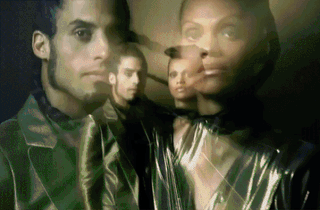
As with collecting in the traditional art world, NFT collectors buy pieces in the hopes that an artist’s work increases in value. But Petit says the difference for her is that there is more of a connection between artists and collectors. “This new way of connecting allows both parties to get to know each a bit more, making it a bit of a more personal experience. In these crazy times, people are craving a little more connection, even if done virtually.”
Putting a piece of art on sale is putting a piece of yourself online too. It’s a challenge for artists whether they’re working with oil on canvas or animated GIFS. “I’m constantly battling with the notion that perhaps my style isn’t the kind people like. Fortunately, I don’t stay stuck in that negative space for too long,” added Petit.
You can find Petit’s work on Unseen, Showtime, OpenSea, and Rariable. Petit also runs an Instagram account BlackNFTCreators where she curates NFTs by Black artists.
Here at Superside, we work with so many amazing artists and know the value of their work. Even with the downsides of changing values and energy costs, NFTs are opening new ways for artists to earn money and support their creativity.
Built to be an extension of in-house teams, we deliver fast, scalable, world-class design and creative solutions to over 450 globally renowned companies such as Amazon, Meta, Salesforce and Google. Connect with us on LinkedIn.
You may also like these
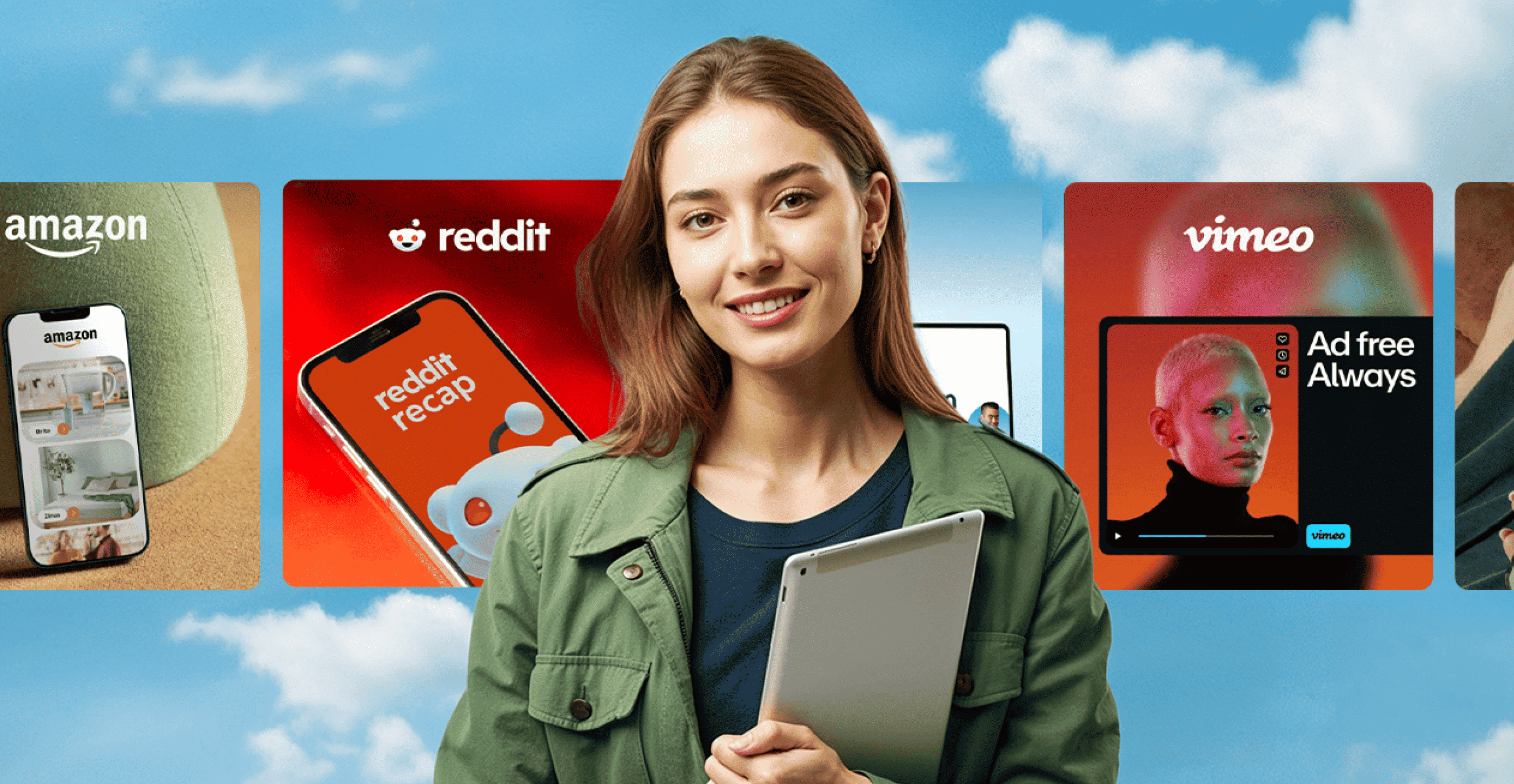
25 best multichannel brand campaigns in 2025 for inspiration
The evidence is clear: Multichannel marketing works.In fact, recent research reveals that 95% of marketers believe that integrating multiple marketing channels in ad campaigns improves audience targeting, according to industry. Companies with strong multichannel marketing campaigns experience a 9.5% rise in annual revenue and 91% higher customer retention rates.With so many top campaigns and great ideas out there, you might be wondering what can work best for your business this year, based on marketing goals, your industry and who's able to scale as much as you need.A leading creative subscription service like Superside offers a powerful way to grow your business with speed and efficiency, as we have done with top brands and enterprises for years now.Of course, taking inspiration from others is a wise place to start. Work through this curated list of creative ad campaign examples to find ideas for your next campaign.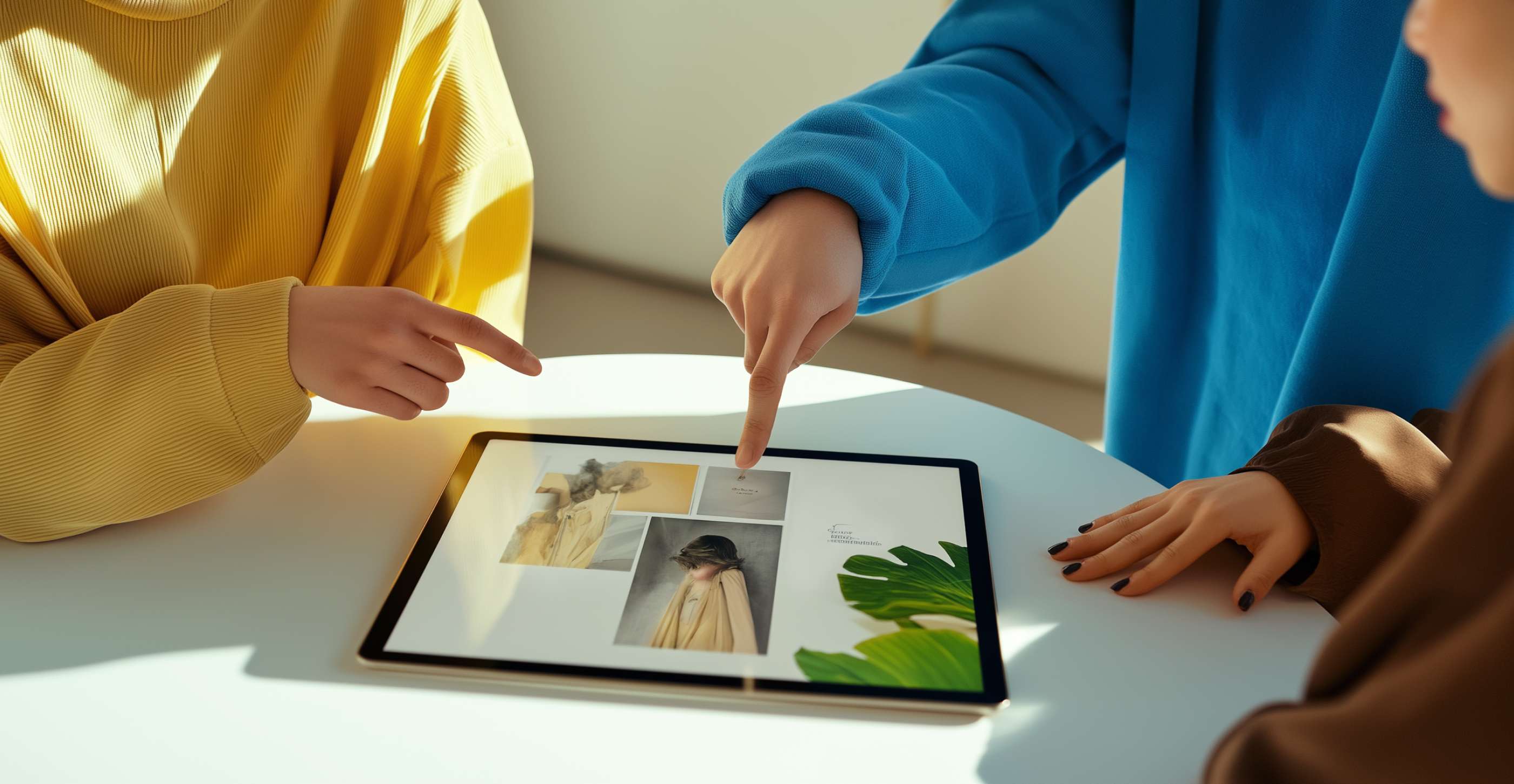
13 principles of design: A visual guide from Superside
Design is everywhere. It influences everything from our pyjamas to our jeans, from our cities’ layouts to our homes.But what makes a design “good?” Why do some designs attract us while others make us feel queasy? Is there a science behind the art, or is it just intuition?If you’re facing a design quandary, this comprehensive guide for enterprise design teams will give you a deeper understanding of design principles. Ultimately, it can help you enhance and elevate your visual communication, branding and marketing strategies.We cover the elements and principles of design, and include clear graphic design examples to illustrate these concepts.Grab that coffee. It’s time for a design deep dive.
15 Corporate Presentation Design Ideas & Services for 2025
Compelling presentations are deal-makers: They captivate audiences and drive decisive outcomes.In fact, the visual storytelling research is pretty convincing. 85% of people remember what they observed in a presentation three hours later, compared to 70% who recall what they heard. After three days, 60% remember the images, but only 10% remember the spoken content.Your presentations must be first-rate. They should simplify complex ideas, showcase information in an easy-to-grasp way, and tell persuasive stories.As an industry leader in corporate presentation design, Superside combines innovative tools, creative expertise and strategic thinking to craft professional visual stories for customers worldwide.You'll find the info on this page invaluable if you’re looking for the best enterprise presentation design service. Superside’s team shares a few killer corporate presentation design ideas to help you lift your game.


